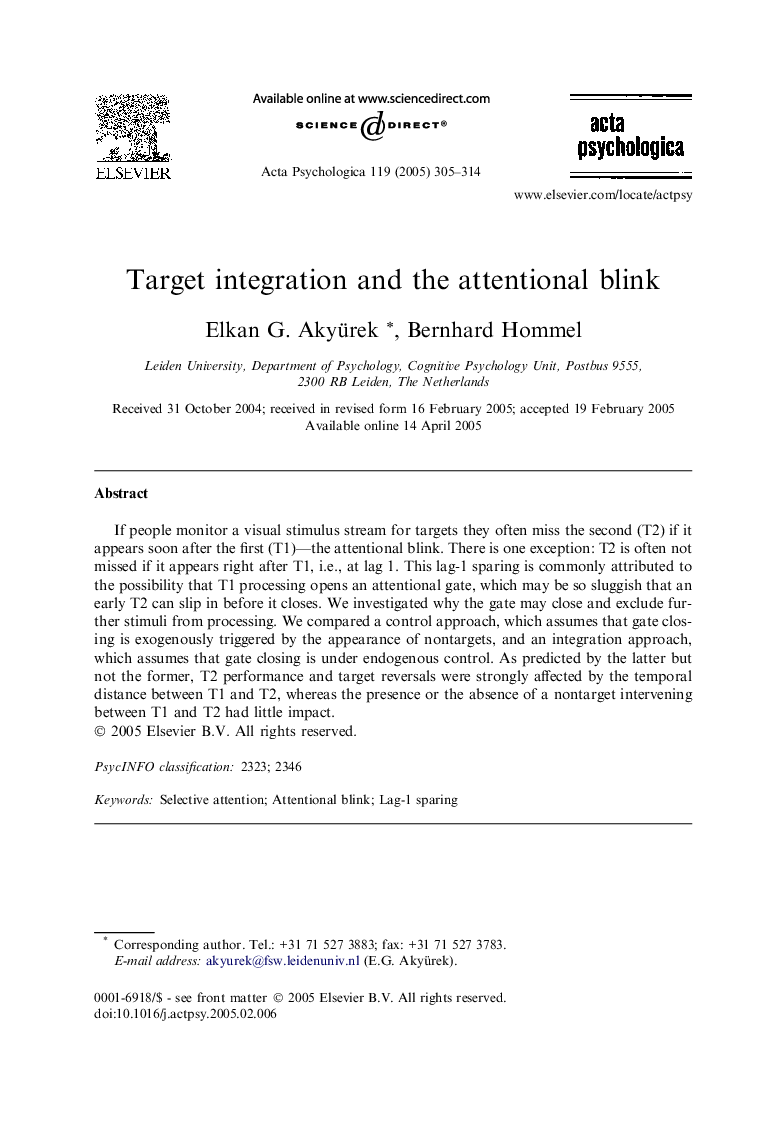| Article ID | Journal | Published Year | Pages | File Type |
|---|---|---|---|---|
| 10453991 | Acta Psychologica | 2005 | 10 Pages |
Abstract
If people monitor a visual stimulus stream for targets they often miss the second (T2) if it appears soon after the first (T1)-the attentional blink. There is one exception: T2 is often not missed if it appears right after T1, i.e., at lag 1. This lag-1 sparing is commonly attributed to the possibility that T1 processing opens an attentional gate, which may be so sluggish that an early T2 can slip in before it closes. We investigated why the gate may close and exclude further stimuli from processing. We compared a control approach, which assumes that gate closing is exogenously triggered by the appearance of nontargets, and an integration approach, which assumes that gate closing is under endogenous control. As predicted by the latter but not the former, T2 performance and target reversals were strongly affected by the temporal distance between T1 and T2, whereas the presence or the absence of a nontarget intervening between T1 and T2 had little impact.
Related Topics
Life Sciences
Neuroscience
Cognitive Neuroscience
Authors
Elkan G. Akyürek, Bernhard Hommel,
